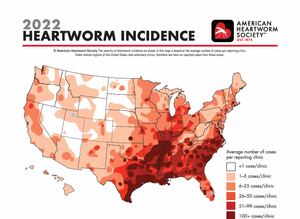
Addressing Evolving Parasitic Threats: Comprehensive Diagnostic Solutions for Veterinary Clinics
Parasitic infections are consistently a major factor threatening the health of companion animals, and today, these threats are presenting an increasingly complex picture. Newly emerging pathogens, constantly evolvingDrug Resistanceproblems, and expandingGeographical Distributiondue to climate and environmental changes, all pose serious challenges to traditionalVeterinary Parasite Testingstrategies. Simply relying on routine fecal microscopy may not fully capture infection risks, leading to missed or delayed diagnoses. This guide aims to delve into the new challenges currently facing the veterinary parasitology field, emphasizing the urgency and necessity of implementing comprehensiveAnimal Parasite Screeningprograms, advocating for the integration of advanced technologies such as antigen detection, antibody detection, and molecular diagnostics to achieve comprehensive and accurate monitoring of heartworms, intestinal parasites, and increasingly importantVector-Borne Diseases.Comprehensive, precise monitoring.
The Changing Landscape: New Challenges in the Parasite Field Cannot Be Ignored
Current veterinary parasitology practices are facing multiple challenges:
1. The Problem of Drug Resistance is Increasingly Prominent
- Potential drug resistance to heartworm prevention medications:Reduced sensitivity to macrocyclic lactones in heartworm strains has been reported in some areas globally, challenging preventive effectiveness, and making diagnostic confirmation after infection even more critical.
- Drug resistance of common intestinal parasites:Reports of roundworms, hookworms, whipworms, etc., developing resistance to commonly used anthelmintics such as benzimidazoles and praziquantel are common.
- Impact on diagnostic strategies:The existence of drug resistance means that one cannot rely solely on deworming history to determine infection status; accurate etiological testing becomes the basis for developing effective treatment plans and evaluating treatment effectiveness.
2. Geographical Distribution Continues to Expand
- Vector distribution changes:Factors such as global warming are causing the geographic distribution and active seasons of vectors such as mosquitoes and ticks to lengthen, causing diseases that were originally regional (such asCanine Heartworm Disease, Lyme disease, Ehrlichiosis, etc.) to spread to new areas.
- Increased animal mobility:Factors such as pet travel, cross-regional adoption, and stray animal migration accelerate the spread of parasites and their vectors across regions.
3. Emerging and Re-emerging Parasitic Threats
In addition to traditionally focused parasites, some parasites that were relatively rare or limited to specific regions in the past (such as certain lungworms, eyeworms, specific protozoa, etc.) may also become new clinical challenges due to environmental changes or introduction, requiring veterinarians to remain vigilant.
4. The Risk of Zoonotic Diseases Cannot Be Ignored
Many animal parasites (such as Toxocara canis, hookworms, Toxoplasma gondii, Giardia, Cryptosporidium, and pathogens of certain tick-borne diseases) have zoonotic potential, and accurate diagnosis and control of animal parasite infections are equally important for maintaining public health and safety.

Diagram: Use a map to show the distribution trends of heartworms or ticks carrying Lyme disease pathogens in the United States or specific regions.
Beyond Routine Microscopy: The Necessity and Composition of a Comprehensive Diagnostic Plan
In the face of complex parasitic threats, single diagnostic methods often have limitations, and establishing a comprehensive diagnostic plan based on risk assessment is essential.
Limitations of Traditional Fecal Microscopy (Ova & Parasite)
- Detection window period:Unable to detect parasitic infections that have not yet matured and laid eggs (prepatent period).
- Intermittent egg shedding:Many parasites do not continuously shed eggs, and a single microscopic examination may result in false negatives.
- Unable to detect specific parasites:Cannot detect heartworms (requires blood tests), and has low detection sensitivity for certain protozoa (such as Giardia, Cryptosporidium).
- Similar egg morphology:Distinguishing between certain eggs (such as Ascaris and Toxocara) requires extensive experience.
- Operator dependency:Result accuracy is greatly affected by the operator's experience and thoroughness.
Key Components of a Comprehensive Diagnostic Plan
-
1. Optimize Fecal Parasite Testing:
- Centrifugal Flotation Microscopy:Significantly improves egg detection rate compared to direct smears or simple flotation methods, and should be used asFecal Parasite Testing Veterinaryservice standard operating procedure.
- Fecal Antigen Testing:Using techniques such as ELISA to detect specific antigens of common worms (such as roundworms, hookworms, whipworms) in feces is not affected by parasite egg shedding and can improve the detection rate, especially suitable for screening and monitoring. (Tashikin's current product line focuses on protozoan antigens, such as GIA Ag and CRY Ag ).
- Fecal PCR Testing:For protozoa (such as Giardia, Cryptosporidium, Trichomonas) or specific worms that are difficult to diagnose by microscopy or antigen testing, PCR testing has high sensitivity and specificity.
-
2. Accurate Canine Heartworm Testing:
- Antigen Testing:Detecting antigens secreted by adult female heartworms in circulating blood is the standard for routineCanine Heartworm Testingscreening recommended by the American Heartworm Society (AHS). Tashikin provides reliable CHW Ag Test Strips based on risk assessment.
- Microfilariae Detection:Examining blood samples for the presence of microfilariae (larvae) under a microscope is used to confirm antigen-positive cases, screen for potential sources of transmission, and investigate possible prevention failures.
-
3. Comprehensive Vector-Borne Disease Testing:
- Antibody/Antigen Rapid Detection:Use rapid detection technologies to screen for antibodies or antigens to common pathogens of diseases transmitted by vectors such as ticks and mosquitoes, such as Lyme disease (Lyme Ab), Ehrlichiosis (EHR Ab), Anaplasmosis (Anaplasma Ab), and Babesiosis (Babesia Ab). Tashikin offers a variety of single tests (such as Lyme Ab , EHR Ab , Anaplasma Ab , Babesia Ab ) and combination tests (such as ANA BAB CHW EHR , ANA BAB EHR , EHR ANA ), making it convenient for clinics to choose based on regional prevalence and risks.
- PCR Testing:PCR testing has higher sensitivity and specificity in the acute phase or when confirmation of the pathogen species is required.
Implementing a Comprehensive Animal Parasite Screening Strategy in Your Clinic
- Risk-Based Individualized Plans:Assess the risk of parasite exposure based on the animal's age (young, adult, senior), lifestyle (indoor, outdoor, contact with other animals), geographical location (endemic risk), and travel history, and recommend personalized screening plans.
- Optimize Annual Screening Recommendations:Follow authoritative guidelines (such as CAPC, ESCCAP) and recommend that all dogs undergo at least annualHeartworm Testing(antigen + microfilariae) andIntestinal Parasite Testing(centrifugal flotation microscopy + antigen testing). IncreaseVector-Borne Disease Screeningbased on risk assessment.
- Improve Fecal Testing Standards:Consider incorporating fecal antigen testing (especially for common worms and protozoa) into routineFecal Parasite Testing Veterinaryservice processes to improve the detection rate.
- Strengthen Customer Education and Communication:Use promotional materials, social media, and clinic communication to emphasize to pet owners the potential hazards of parasites, the risk of zoonotic diseases, the importance of year-round prevention, and the necessity of regular screening.
Tashikin: Your Reliable Partner for Advanced Parasite Diagnostics
Tashikin Animal Health is committed to providing veterinarians with accurate and efficient diagnostic tools to address increasingly complex parasite challenges. We offer a range of advancedVeterinary Parasite Testingsolutions, including:
- High-quality Heartworm Antigen Testing (CHW Ag)
- Reliable Intestinal Protozoa Antigen Testing (GIA Ag, CRY Ag)
- Comprehensive Vector-Borne Disease Antibody Testing (Lyme Ab, EHR Ab, Anaplasma Ab, Babesia Ab, and multiple combination options)
Our products, with their accuracy, ease of use, and stability, can powerfully support you in implementing comprehensiveAnimal Parasite Screeningstrategies to improve your clinic's diagnostic capabilities and service levels.